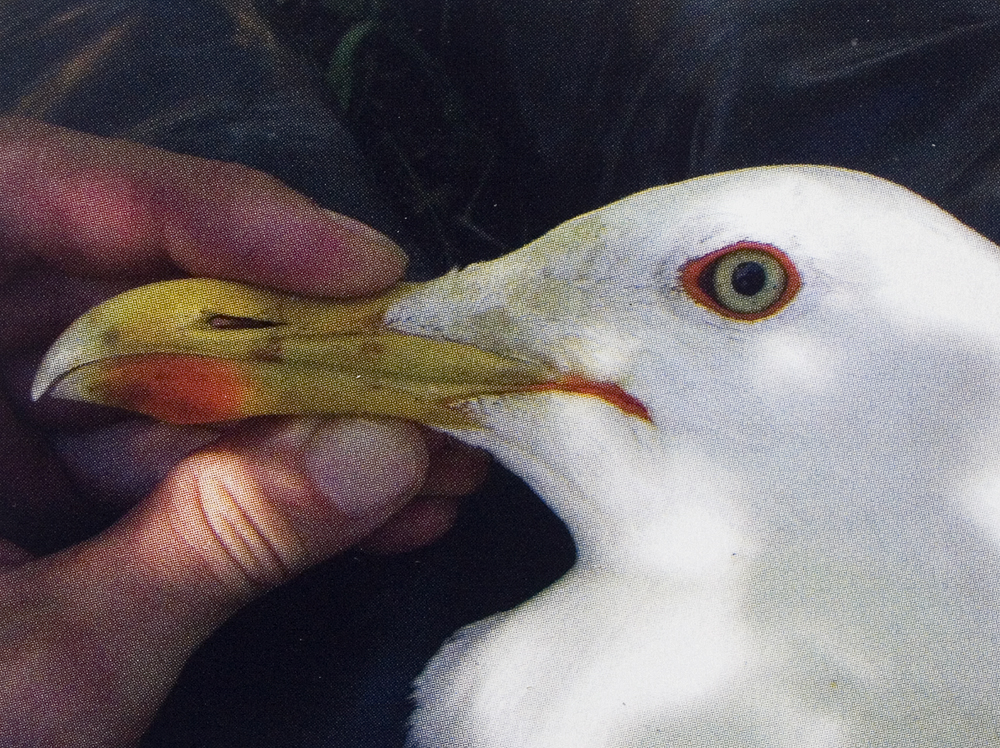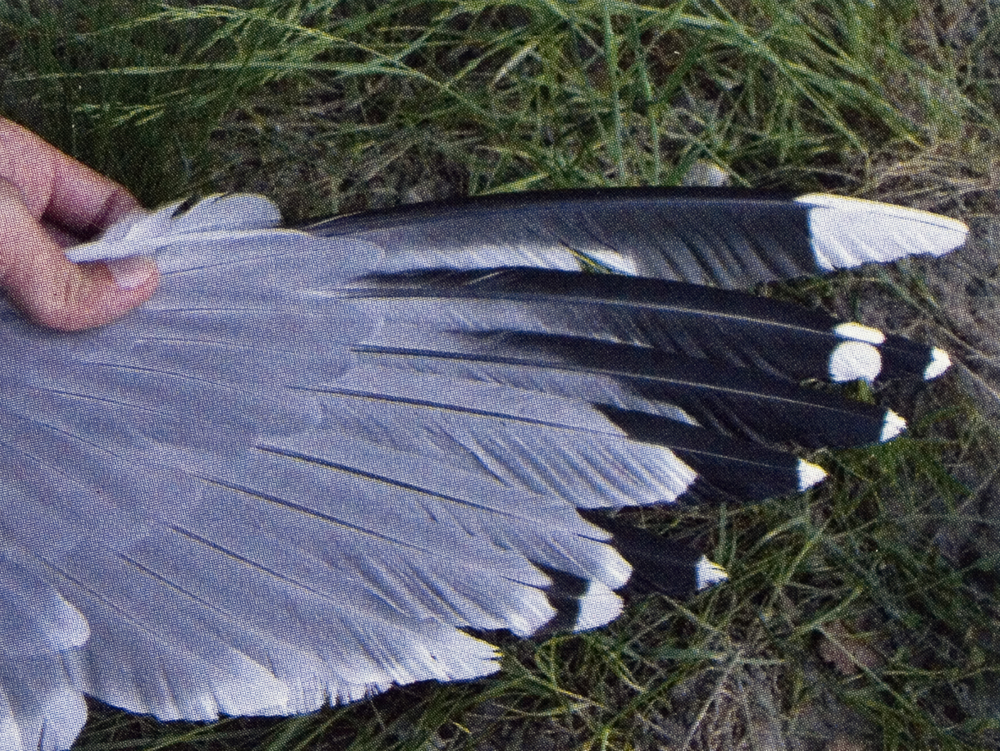 Larus cachinnans
Larus cachinnans
(last update:
Greg Neubauer
Marcin Przymencki
Albert de Jong
Mars Muusse
cachinnans plumages
Larus cachinnans hybrid 9cy female May 2011, Przykona Reservoir, central Poland. Picture: Thomas Iciek.
9CY female hybrid Caspian x Herring Gull, Przykona Reservoir, central Poland, May 2011 (trapped also in 2009). Parents known as Herring (mother) and Caspian (father). This hybrid was ringed as a chick in May 2003 in Wloclawek, c. 80 km northeast of the colony where it bred in 2007-11. Its wing-tip generally resembles that of Caspian, but there is a little more black than white on P10, the tongue is grey (not white), and the white mirror on P9 is relatively small. Note the intense coloration of the bare parts, but that the iris is nearly non-spotted. Bill ratio computed from depth/length measurements was 3.02, thus falling between Herring and Caspian (see Neubauer et al. 2007). Its overall score was 9, just on the safe limit for identification of Caspian.


Below, table 1 is repeated to score this bird. Not all traits can be scored, the partial scores are in italic + bold.
Here, all 9 traits are visible from the image, trait score is 14, which places this bird in the hybrid zone.
| Trait | Score | Description |
| P10 overall pattern: white to black ratio | 0 | less black than white |
| 1 | approximately equal black and white | |
| 2 | more black than white | |
| P10: white tip | 0 | clear white, no signs of black |
| 1 | small dark spots on one or both webs | |
| 2 | incomplete subterminal bar (two large black spots, one on each web or an unconnected bar, broken in the middle) | |
| 3 | complete subterminal bar | |
| P10: tongue | 0 | white or whitish |
| 1 | paler than mantle | |
| 2 | same shade as mantle | |
| P5: extent of black | 0 | black on both webs connected, forming band, black of equal depth on each web |
| 1 | black on both webs connected, forming band, black on outer web deeper than inner | |
| 2 | black on both webs, but isolated spots (= incomplete bar) | |
| 3 | black on outer web only | |
| 4 | no black | |
| P4: extent of black | 0 | black on both webs |
| 1 | black on one web only | |
| 2 | no black | |
| Iris peppering | 0 | dark-looking, >50% covered by dark spotting/peppering |
| 1 | moderately dark, with 10-50% of the area spotted | |
| 2 | single or very few dark spots (area < 10%) | |
| 3 | no dark spotting on iris | |
| Eye-ring colour | 0 | dark/deep orange to red |
| 1 | pale to moderately orange | |
| 2 | yellow | |
| Bill shape | 0 | very long and slim, with little/no visible gonydeal angle (L:D ratio >2.8) measured 3.02. |
| 1 | slim, slight gonydeal angle (ratio 2.4-2.79) | |
| 2 | intermediate (ratio 2.0-2.39) | |
| 3 | short and deep, well-marked gonydeal angle (ratio <2.0) | |
| Leg length | 0 | long |
| 1 | moderately long | |
| 2 | short |